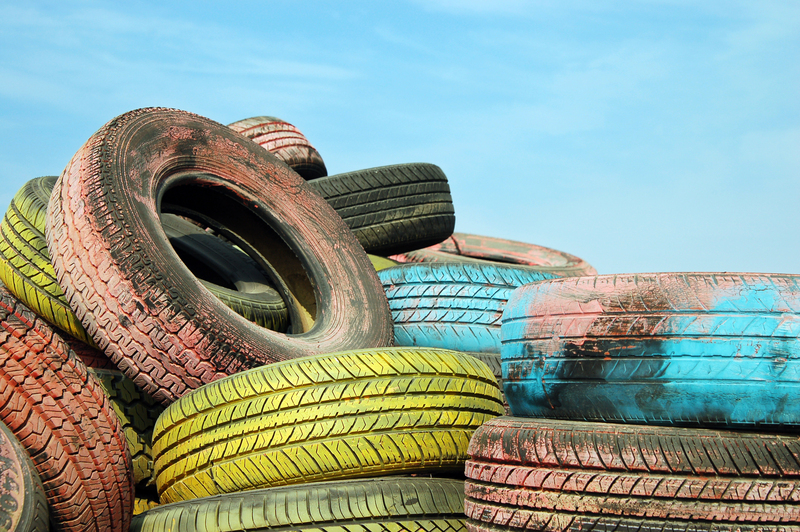Mastering the Art of Responsible PPE Waste Disposal
PPE (Personal Protective Equipment) has become a critical element in safeguarding our health, especially since the outbreak of COVID-19. However, with increased usage comes an equally important responsibility: disposing of PPE waste in a way that is safe and environmentally friendly. Mastering the art of responsible PPE waste disposal is not only essential for public health but also for protecting our planet for future generations.

Why Responsible PPE Waste Disposal Matters
Disposable masks, gloves, and other forms of PPE are designed for one-time use and should not be reused due to potential contamination. Unfortunately, improper disposal leads to pollution, health risks, and harm to wildlife. Understanding the significance of correct PPE waste management ensures that we minimize these negative impacts.
- Environmental Impact: PPE items are frequently made from plastics that do not easily decompose.
- Public Health Risk: Used PPE can harbor infectious agents, risking contamination if handled improperly.
- Wildlife Hazards: Improperly disposed of gloves and masks can entangle animals or be mistaken for food.
Understanding Different Types of PPE Waste
Before mastering PPE disposal techniques, it's crucial to recognize the types of PPE you might encounter:
- Masks: Surgical, N95 respirators, and cloth masks
- Gloves: Nitrile, latex, and plastic gloves
- Gowns: Plastic or cloth gowns used in healthcare and industrial settings
- Face Shields & Goggles: Reusable or disposable eye protection
- Other Equipment: Shoe covers, caps, and disposable coveralls
Each type requires a slightly different approach when it comes to responsible disposal.
The Environmental Crisis: PPE Waste in Numbers
The surge in PPE usage has led to a dramatic increase in waste generation. According to a United Nations Environment Programme (UNEP) report, as much as 75% of used masks and gloves end up in landfills or floating in oceans. This equates to billions of pieces of PPE discarded every month - a significant environmental burden if not managed responsibly.
Key Data on PPE Waste
- Medical facilities worldwide generated an extra 20% of medical waste during the height of the pandemic.
- Over 1.5 billion masks may have entered the ocean in 2020 alone.
- Microplastics from PPE can persist for hundreds of years, breaking down into even smaller harmful particles.
Principles of Responsible PPE Waste Management
Mastering the art of safe PPE disposal means adopting certain principles that help prevent the spread of disease and mitigate environmental harm. Each step in the process, from segregation to final treatment, matters.
Segregation at Source
- Separate Bins: Use dedicated bins for PPE waste, clearly labeled for easy identification.
- No Mixing: Do not mix PPE with regular household or office waste. This controls contamination risks and simplifies disposal.
PPE Waste Collection
- Containment: Use resilient, puncture-proof bags or bins to collect used PPE.
- Double Bagging: In high-risk areas, double-bagging offers extra protection against leaks or spills.
Treatment and Final Disposal
- Incineration: Medical incinerators safely destroy infectious PPE waste at high temperatures, reducing risks.
- Landfilling: For non-infectious PPE, sanitary landfills may be acceptable following local guidelines.
- Autoclaving: High-pressure steam sterilization before disposal, often for hospital waste.
Best Practices for PPE Waste Disposal at Home
Most PPE waste is generated outside of healthcare facilities--schools, offices, public venues, and homes. Here's how you can do your part in responsible PPE waste management:
Step-by-Step Guide for Safe Disposal
- Remove PPE Carefully: Avoid touching the contaminated outside surfaces.
- Place in Separate Bag: Put used PPE in a dedicated, leakproof bag or container.
- Seal the Bag: Tie off or seal the bag tightly to contain contaminants.
- Dispose Responsibly: Place PPE waste in your trash (not recycling). Always check for community-specific disposal instructions.
- Wash Your Hands: Clean your hands thoroughly with soap and water after handling used PPE.
What Not to Do
- Do not flush masks, gloves, or wipes down toilets. These clog sewer systems and harm the water supply.
- Never recycle used PPE through curbside programs. Most PPE is not recyclable and can endanger recycling workers.
- Avoid burning PPE at home. This releases harmful chemicals and should only be done in regulated facilities.
Community and Workplace PPE Waste Management Strategies
In shared environments like workplaces and schools, systematic approaches ensure the proper PPE waste disposal for everyone's safety.
-
Accessible Waste Stations:
- Install touchless or foot-pedal bins in entryways, exits, and high-traffic areas.
- Clearly identify bins with signage highlighting PPE-only disposal.
-
Education and Training:
- Hold regular briefings on PPE use and disposal protocols.
- Distribute easy-to-read posters with disposal instructions.
-
Regular Monitoring:
- Assign staff or volunteers to monitor and replace full bins promptly.
- Record waste data to identify improvements or hotspots for attention.
Special Considerations for Healthcare Facilities
Hospitals and clinics produce high volumes of potentially infectious PPE waste. Safe waste segregation, internal transport in closed carts, and handling by trained personnel are non-negotiable. Medical facilities often use color-coded bags and bins to clarify disposal procedures.
PPE Waste: Not Just a Pandemic Problem
While COVID-19 heightened awareness of PPE waste, the issue extends beyond pandemics. Construction sites, laboratories, factories, and even beauty salons generate significant amounts of protective equipment waste. Effective PPE waste disposal must be a permanent part of every organization's environmental health and safety plan.
Industries That Must Prioritize PPE Waste Disposal
- Healthcare and Veterinary Services
- Food Processing and Service
- Manufacturing & Construction
- Research Laboratories
- Cleaning Services
Technological Innovations in PPE Waste Solutions
Innovation is key to coping with the mounting volume of PPE waste. Several new approaches are leading the way in responsible PPE waste management:
- Recycling Programs: Some companies are developing processes to recover plastic from single-use masks and gloves, transforming waste into usable materials for construction or new PPE products.
- Biodegradable PPE: Scientists are working on eco-friendly alternatives to conventional materials, such as compostable face masks and gloves.
- Waste-to-Energy: Specialist incinerators convert PPE waste into energy, reducing landfill pressure and generating electricity.
- Sterilization Units: On-site AUTOCAVES sterilize and compact waste for safer handling and reduced transportation needs.
Challenges to Implementing Innovative PPE Waste Strategies
Adopting these technologies is not without obstacles:
- Cost: Setting up specialized recycling or energy plants requires investment.
- Lack of Infrastructure: Many regions lack the necessary facilities for large-scale PPE waste processing.
- Public Awareness: Not everyone knows about or participates in these new programs.
Government Regulations and Guidelines for PPE Waste Disposal
Countries and health authorities have issued detailed protocols for managing PPE waste responsibly. It is important to stay updated, as regulations change based on evolving scientific understanding and local risk levels.
Key International Guidelines
- World Health Organization (WHO): Emphasizes segregation, safe storage, and final disposal in regulated facilities for healthcare PPE waste.
- Centers for Disease Control and Prevention (CDC): Provides guidance on handling PPE in community and healthcare settings.
- Local Environmental Agencies: Often provide community-specific PPE waste disposal instructions; always follow local laws and guidance.
Following these standards not only ensures compliance but also sets a model for others to mimic, amplifying the effect of responsible PPE disposal.
How to Raise Awareness and Foster Eco-Friendly Habits
Individual action is powerful, but lasting change depends on collective awareness. Here are ways to advocate for better personal protective equipment waste disposal in your community:
- Educate: Share information about the consequences of incorrect PPE waste disposal with family, friends, and colleagues.
- Lead by Example: Display proper disposal habits consistently at home and in public.
- Advocate: Encourage your workplace, school, or local government to install dedicated PPE waste bins and promote recycling programs.
- Volunteer: Participate in clean-up events, especially in public spaces where PPE litter is common.

Frequently Asked Questions About PPE Waste Disposal
Can PPE be recycled with household recycling?
No. Most single-use PPE is made of mixed materials that are not recyclable through standard programs. Placing them in the recycling stream may risk contaminating the entire batch.
What should I do with my reusable PPE?
Reusable masks and goggles can be washed according to manufacturer instructions. When they become unusable, check if the manufacturer offers a take-back or recycling program.
Are biodegradable PPE products available?
Yes! Some companies now offer biodegradable masks and gloves. However, these still require proper disposal, as they will not decompose like ordinary organic waste unless handled correctly.
The Future of PPE Waste Disposal: Towards Zero Impact
Mitigating the environmental impact of PPE waste necessitates a combined effort of policy, innovation, and education. As technology advances, we move closer to circular solutions, turning used PPE into new resources and responding quickly to surges in demand. Mastering the art of safe PPE waste disposal ensures that the protective gear we rely on doesn't become an environmental hazard.
What Can You Do Today?
- Stay Informed: Keep up with the latest disposal guidelines in your locality.
- Choose Wisely: Where possible, opt for reusable or biodegradable PPE and dispose of them in accordance with recommended protocols.
- Be a Steward: Set a positive example and encourage others to master responsible PPE waste disposal, whether at home, work, or in your community.
Conclusion: The journey towards responsible PPE waste disposal is ongoing. By adopting best practices, fostering innovation, and promoting awareness, we can ensure that the shield protecting our health doesn't compromise the world in which we live. Commit to responsible PPE waste management today and play your part in creating a safer, cleaner, and healthier environment for all.
